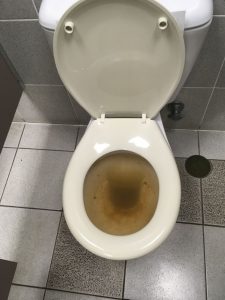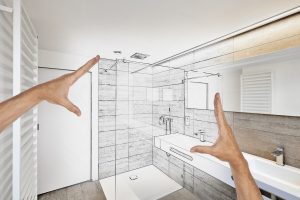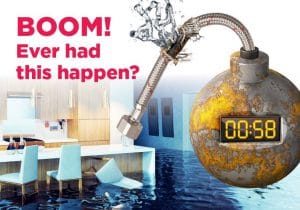
What is a Form 4
QBCC Form 4 Plumbing Compliance Certificate
We often receive questions from clients regarding why we charge them for Form 4. The straightforward answer is that it is required by law.
The Form 4 system for plumbing and drainage work has existed for over two decades.
Initially, licensed plumbers had to submit Form 4 to local authority plumbing inspectors. For those on the Gold Coast, this meant submitting the form to the City of Gold Coast’s Plumbing and Drainage section when replacing part of the sewer house drain, water main, or hot water service.
In 2012, legislative changes mandated plumbers lodge Form 4 with the Department of Housing and Public Works through the Plumbing Industry Council (PIC). This was the first time a fee was introduced for lodging a Form 4, which amounted to $25.90. In 2014, the Queensland Building and Construction Commission (QBCC) assumed responsibility for the Form 4 process as part of their role in overseeing occupational plumbing licensing.
Once Form 4 is submitted, it may be subject to a random compliance audit to ensure the work adheres to the Plumbing and Drainage Act 2018 and the Plumbing and Drainage Regulation 2019. This process guarantees that work is carried out to the highest standards, safeguarding everyone’s well-being, health, and safety.
Whywait Plumbing has always been a proponent of the Form 4 process, as it ensures that all work on your property is compliant and registered with both the QBCC and the City of Gold Coast. In the event of a significant insurance claim involving plumbing failure, an accessor can easily trace the work to confirm that it was performed legally and in compliance with regulations.
In essence, Form 4 serves to protect homeowners.
Which areas of plumbing & drainage work are classified as notifiable work?
The definitions of notifiable work were updated on 1 July 2019 to ensure clarity and usability and establish cost-effective plumbing laws and regulations for both plumbers and property owners.
Twelve primary categories of notifiable plumbing and drainage work necessitate a Form 4:
- Extending water supply pipes – involves work on water reticulation pipes other than fire services in existing buildings.
- Extending or removing a fire service – applies to class 2-9 buildings with development approval as per schedule 2 of the Building Act 1975.
- Existing sanitary plumbing – pertains to work in existing buildings where sanitary plumbing is removed, replaced, altered, or extended.
- Existing sanitary drainage – concerns work on existing class 1 to class 10 buildings involving extension, replacement, alteration, or removal of any part of the sanitary drain system (excluding a combined sanitary drain). This also applies to extensions or alterations to a class 1 building.
- Temperature control devices – includes work with thermostatic mixing valves (TMVs) or tempering valves in existing buildings that require installing, replacing, or removing a valve. This also applies to extensions or alterations to a class 1 building.
- Water heaters – involves work in existing buildings requiring installing, replacing, or removing a hot water heater. This also applies to extensions or alterations to a class 1 building.
- Backflow prevention devices – work with testable backflow devices or dual check valves in existing buildings that require installing, replacing, or removing a valve. This also applies to extensions or alterations to a class 1 building.
- Greywater treatment plants – pertains to work involving installing a greywater use system that includes a greywater treatment plant installed in a sewered area where the plant generates less than 3kL of greywater daily or for replacing a greywater plant.
- Fixtures in class 1 or class 10 buildings – include work required for installing a new fixture or relocating an existing fixture in class 1 or class 10 buildings. This also applies to extensions or alterations to a class 1 building.
- Fixtures for class 2 to 9 buildings of 1 or 2 storeys – applies to all work other than sanitary drainage required for installing or relocating a fixture, provided the work is for an existing class 2 to 9 building up to two storeys above ground.
- Sanitary drains – involves sealing a sanitary drain after the connection point to the council sewer or a treatment plant.
- Sealing supply pipes – includes work to seal a water supply pipe after the council water meter, provided the work is for an existing class 2 to class 9 building.
The QBCC provides easy-to-understand guides on notifiable work and the definitions of building classes as outlined in the Building Code of Australia, which can be downloaded below:
Form 4 notifiable work compliance
Every reputable professional plumber I know wholeheartedly supports the notifiable work system. This support ensures that homeowners and property owners can trust that all work carried out on their property adheres to the required standards.
If you have had plumbing or drainage work done and have not been provided with a Form 4, as shown above, and the work falls under the listed categories, you should report it to the QBCC immediately or call them at 139333. High-quality plumbing and drainage work is essential for protecting your health.
If you are uncertain or need assistance, don’t hesitate to contact us at (07) 5580 4311; we will offer our opinion. Ultimately, all plumbing work is not about guesswork but compliance with the law, specifically the Plumbing and Drainage Act 2018.















 Leaking gas, whether it’s natural gas or LPG, is dangerous. There are no DIY gas repairs; you must always use a
Leaking gas, whether it’s natural gas or LPG, is dangerous. There are no DIY gas repairs; you must always use a  Overflowing sewage from toilets or floor wastes needs to be taken seriously. Raw sewage flowing into your house or outside is hazardous, and the risk of contamination is real.
Overflowing sewage from toilets or floor wastes needs to be taken seriously. Raw sewage flowing into your house or outside is hazardous, and the risk of contamination is real. A
A 
